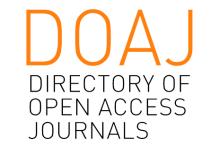Resource information
Growing like “wildfire”, traffic congestion, the spread of pollution, the inefficiency of the services, the chaotic mix of land uses, lack of green are some of the features, unfortunately now become familiar in cities across the world. This is an interesting time for both examine the tools available to urban planners expression of for the analysis and definition of policies both to see how they have adapted to the new conditions. A betterenvironment and qualitylandscapes are necessary conditions for attractinginvestments, assets and people. But they are not sufficient. It shouldalsobe a social and humanlandscapequality to trigger local development. For example, consider the network of "slow city". It was founded as a cultural and proposal of new lifestyle. But that possesses significant practical implications in terms of more balanced regional development, because polycentric. The same report city / country is improved by slow development of these practices. They are able to reduce the depopulation and activities to the centers of larger size, reducing costs (congestion, agglomeration, overuse of resources) both in the areas of concentration in the internal ones (better use of resources, maintenance / control of the territory, etc.).



